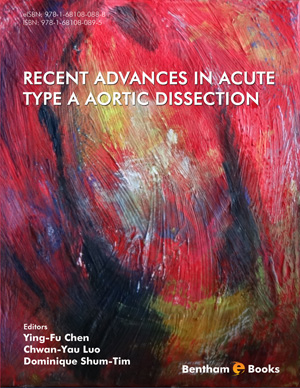Abstract
SHS investigation development is considered from the geographical and historical viewpoint. 3 stages are described. Within Stage 1 the work was carried out in the Department of the Institute of Chemical Physics in Chernogolovka where the scientific discovery had been made. At Stage 2 the interest to SHS arose in different cities and towns of the former USSR. Within Stage 3 SHS entered the international scene. Now SHS processes and products are being studied in more than 50 countries.
Abstract
The early and late results of surgery for acute type A aortic dissection (TAAAD) has improved significantly since the 1960s. The common causes of death are perioperative bleeding and organ dysfunction because of the dissected aorta. The commonly reported variables that predict surgical mortality are preoperative shock, advanced age (> 70 years old), and malperfusion of distal organs. The late (postdischarge) survival rate for patients with TAAAD is consistently lower than that of the general population. Surveillance of these patients of aortic expansion, cardiac disease, and medical adherence to anti-impulse therapies is important. Late reoperation rates among these patients are decreasing and the mortality rates of reoperation have become acceptable. Distal aortic reoperation is more common than proximal aortic reoperation, and preventing open repair might be promising with endovascular techniques.
Keywords:
Acute type A aortic dissection, Aneurysm, Brain protection, Cardiopulmonary bypass, David procedure, Deep hypothermic circulatory arrest, Elephant trunk, Endovascular technique, False lumen, Late survival, Long-term outcomes, Malperfusion, Reoperation, Retrograde cerebral perfusion, Risk factor, Root replacement, Selective antegrade cerebral perfusion, Surgical mortality, Surgical results, Valve-sparing techniques.
Recommended Chapters
We recommend

Authors:Bentham Science Books


 Download PDF Flyer
Download PDF Flyer



